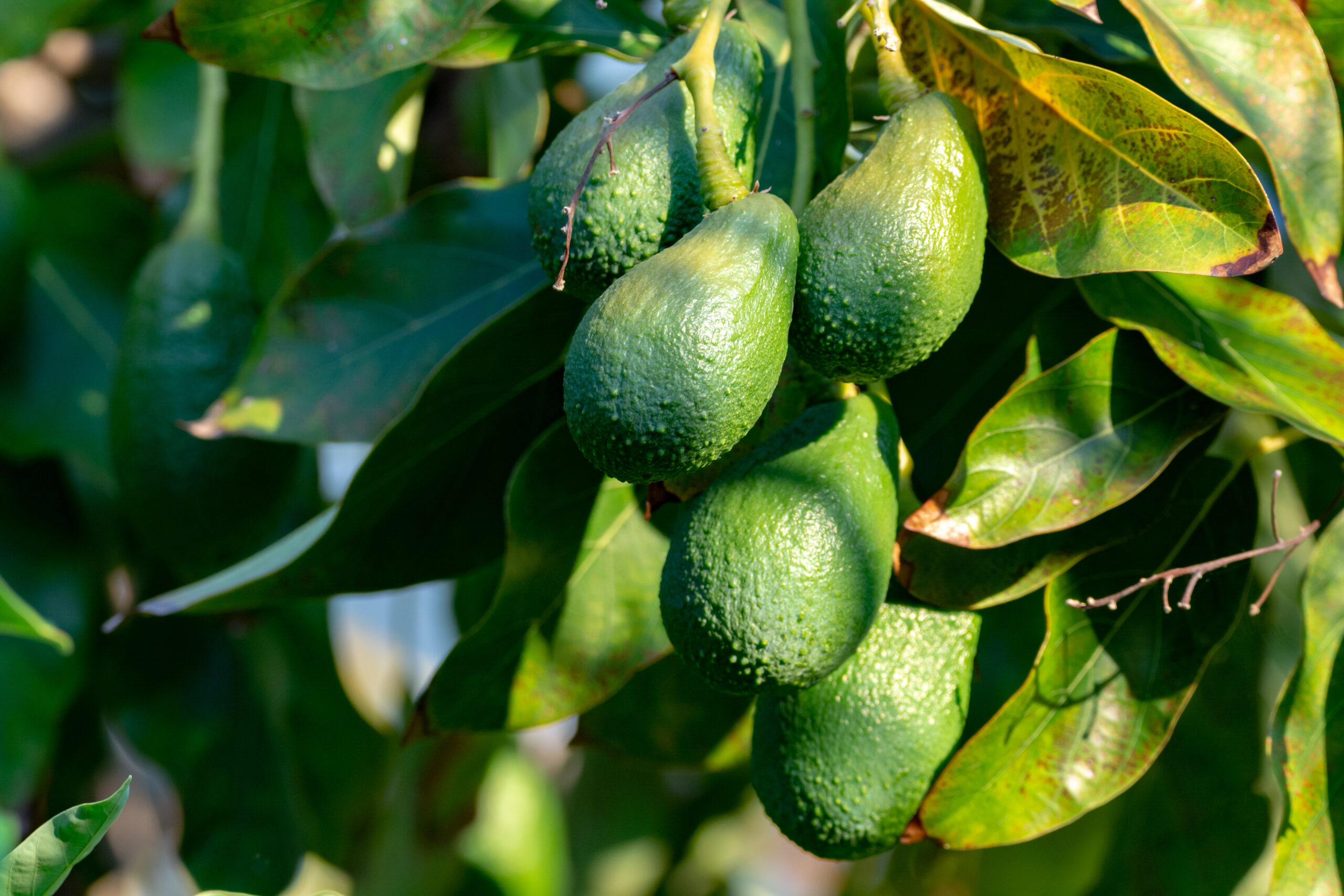
Florida is a top producer of avocados, but agriculturalists fear the spread of a 20-year-old disease called laurel wilt will continue to negatively impact the fruits’ harvest in commercial industry areas throughout the state. Due to the intricacy of combating the invasive redbay ambrosia beetles that carry the fungus, avocado groves and other flora continue to decline, falling victim to laurel wilt despite the ongoing development of solutions. “This insect disease is complex,” said Jonathan Crane, University of Florida’s Associated Center director and fruit crop specialist.
Avocados are fruits that originated in Mexico and South and Central America. Avocado trees were first planted in Florida in 1833, followed by California in 1856. Florida is the second biggest producer of avocados in the United States, accounting for most of the production, with California being first and Hawaii being third. Florida has more than 56 varieties of avocados.
According to the National Agricultural Statistics Service per state provided by the United States Department of Agriculture, “In Florida, most early season varieties of avocados are West Indian types, whereas midseason and late varieties are mostly Guatemalan-West Indian hybrids or Guatemalan types. Florida avocados have a lower fat content than those from other states and countries, are typically larger than avocados from California, and are available from June through the end of February.”
Laurel wilt, Raffaelea lauricola, is a fungal symbiont that was introduced by the invasive beetle, Xyleborus glabratus which was first discovered in the United States in 2002 and found in Florida by 2005. Multiple different species of ambrosia beetles can transmit the disease, which targets and affects trees of Lauraceae plants (Laurel family), such as avocado trees.
“(The beetles) were introduced into Port Wentworth, Georgia, in infested wood packing material from Asia during 2002,” said Crane. “It spreads through natural areas by redbay ambrosia beetle movement and anthropogenic movement of infested wood products.”
Beetles are wood-degrading insects that were once considered beneficial for accelerating the decay of dead trees and the natural cycle of healthy forests. However, laurel wilt is now considered a high-risk invasive disease equal to Dutch elm disease or chestnut blight.
Large populations of the Redbay ambrosia beetle commonly inhabit avocado groves. Other prone trees include the Redbay, swamp bay, and sassafras, all in the laurel family. The invasive beetle is said to be about two millimeters in length and are extremely difficult to see with the naked eye.
“By February 2010, redbay ambrosia beetles were detected in a natural area, 21 miles north of the south Florida avocado production area (125 square miles) in Miami-Dade County,” said Crane. “In 2011, the first confirmed swamp bay tree to succumb to laurel wilt was documented in this natural area, and by 2012, laurel wilt was detected in a commercial avocado grove in Homestead, Florida.”
The Avocado Administrative Committee stated, “Hundreds of thousands of commercial avocado trees have died due to laurel wilt since 2012 when it was detected in the commercial avocado production area (in Miami-Dade County.)”
“The laurel wilt-ambrosia beetle continues to threaten Florida’s avocado industry despite 14 years of research to find an entirely effective control program,” said Crane. “To date, the loss of over 140,000-plus commercial avocado trees can be attributed to laurel wilt, worth an estimated $46.2 million. This is because little to nothing was known about the fungal phytopathogenic symbiont.” Jeff Wasielewski, a commercial tropical fruit extension agent with the University of Florida, said, “A battle is being waged in the avocado groves of South Florida where the region’s largest and most economically important fruit crop is under attack. Avocados account for approximately 4,200 acres in Miami Dade County and have an economic impact of $54 million on the regional economy. The avocado industry has already lost over 300,000 trees due to laurel wilt since the introduction of the disease to Miami-Dade County.”
Root grafts spread of laurel wilt move at a rate of three to six new trees per month, causing the loss of over 90 trees within six months. Visible external symptoms of laurel wilt in avocado trees include green-leaf wilting and turning brown and the sapwood developing black-blue stained streaks. As the infection progresses, the plant leaves turn black and continue to die off throughout the groves.
The beetles are known to have a short flight time frame. Their activity heightens one hour before sunset. The beetles prefer shady spots and are more vigorous during late winter and early spring, consequently the peak of the avocado season. The studies found that having higher levels of light reduced the infestation of laurel wilt in avocado groves.
The beetles primarily colonize stressed trees. However, the fungal organism harboring laurel wilt hosted in root-grafted avocado trees in groves rapidly grows in the well-protected insides of the tree. Laurel wilt is highly virulent, and trees with as few as 36 spores can incubate the disease, blocking off the water-conducting tissues of the tree and impacting the tree’s defense mechanisms. Growers began stumping or cutting back infected avocado trees. Still, they found the plant would regrow and eventually die off again until the plant was officially deceased, with only a few cases of the plant growing disease-free with fruit production after three to four years.
The University of Florida Tropical Research and Education Center conducted experiments with different variations of avocado trees. They found that diverse genetics reacted differently to the infection of laurel wilt and symptoms correlated with plant size and age. According to the experiments, “larger plants declined more rapidly to infection by the laurel wilt pathogen than smaller plants.”
“In commercial groves, mature trees of 32 avocado cultivars of various genetic backgrounds have been documented to succumb to laurel wilt,” UFIFAS studies affirmed. “No mature avocado trees of any cultivar have been discovered to be tolerant to the laurel wilt pathogen so far.”
Findings and recent research discovered that prophylactic systemic propiconazole (Tilt) fungicide infusion protected avocado trees from laurel wilt for 12 to 18 months but required reapplications that could harm the plant and its fruit. The infusions were costly, making economic control tactics difficult. Other rheostat systems tested included insecticides for the beetles. However, this method was only effective for redbay ambrosia beetles outside of the plant and most of the infected beetles spend the life cycle within the tree. Wasielewski stated that cutting and burning tree wood helps prevent the spread of laurel wilt, as trees are used as breeding sites for the beetle. “Keep groves pruned,” said Wasielewski. “Ambrosia beetles prefer shady areas and are less likely to go to groves that are well-pruned.”
The Florida Department of Agriculture and Consumer Services (FDACS) suggested scouting groves weekly for laurel wilt infestation, using local wood, not moving unprocessed wood, and sourcing from registered nurseries throughout Florida. Florida has approximately 10,000 bonded nurseries and stock dealers. “Don’t transport avocado trees or any other trees in the Laurel family unless you purchased them from a registered nursery,” said the FDACS. “Dealers in agricultural products, including nursery plants, must be licensed and bonded. All plant nurseries and nursery stock dealers are required to register annually. If you are producing or growing plant material for sale or distribution, you must register as a nursery.”






